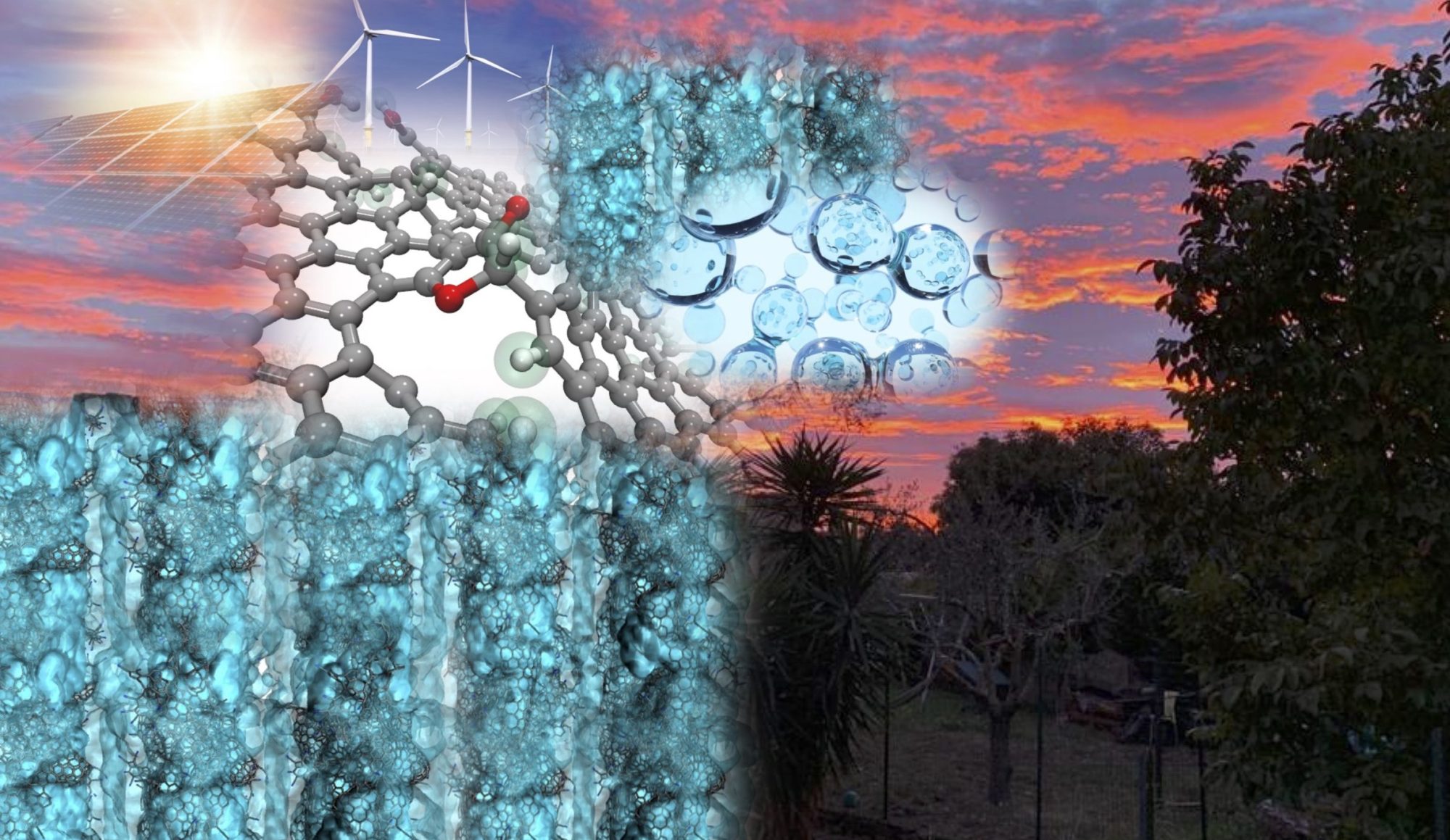Advancements in scalable synthesis and fabrication methods has largely increased the application potential of two-dimensional (2D) materials, such as graphene and transition metal dichalcogenides, which are at the forefront of an increasing research interest for their unique and tunable optoelectronic properties, i.e. the broadband absorption spectrum, the ultrafast carrier dynamics, an optical response that can be tailored by design. These features are exploited in the realization of wide spectrum image sensors that capture UV, visible and infrared photons and have been already implemented in autonomous driving systems and thermal cameras.
Two important characteristics that underpin the uptake of 2D systems in optical and infrared sensors are their compatibility with standard solid-state platforms (e.g. silicon CMOS) and the possibility to take advantage of energy-efficient detection mechanisms, such as the photo-thermoelectric effect, which entails zero-bias operation and zero-power consumption. These features can be exploited in the realization of far-infrared devices for energy efficient communications and quantum systems.

Terahertz communications. The next generation of wireless networks (i.e., 6G) is envisioned to support communication in the three-dimensional space by integrating space, aerial, terrestrial, and undersea networks, with unprecedented performances in terms of reliability and speed, therefore entailing a paradigmatic shift towards higher frequency communication carriers: communication channels will have to shift from the microwave (60-100 GHz) to the terahertz (THz, 0.1-10 THz) frequency domain. 2D-material devices and systems allow for the realization of sensitive and energy-efficient THz detectors and are expected to play a relevant role in future wireless networks.
Quantum Technologies. Thanks to the wide fabrication versatility of graphene, it can be integrated on-chip with far-infrared quantum sources (i.e. THz quantum cascade lasers, QCLs) leading to novel functionalities, such as wide spectral tuning, nonlinear high-harmonic generation, and pulse generation or giving direct access to the device temperature, therefore providing a way to improve thermal management and power consumption of THz QCLs.
| People | Alessandra di Gaspare, Elisa Riccardi, Leonardo Viti, Miriam Serena Vitiello* |
| Keywords | Terahertz optoelectronics, zero-power consumption, sensors, 6G communications, quantum technologies |
| Methods, techniques | SEM microscopy, EBL, micro-Raman, Photoluminescence microscopy, FTIR Spectroscopy, Time-domain spectroscopy |
| Granted projects | |
| M. S. Vitiello (Resp. Unità); QATACOMB – Quantum correlAtions in TerAhertz qcl COMBs, QUANTERA 2021; 2022-2025. Website: https://quantera.eu/qatacomb/ | |
| M. S. Vitiello (PI); SPRINT – Ultra-Short Pulse laser Resonators IN the Terahertz, ERC Consolidator Grant; 2017-2023. https://cordis.europa.eu/project/id/681379/results | |
| M. S. Vitiello (Resp. Unità); EXTREME-IR – Extreme Optical Nonlinearities in 2D materials for Far-Infrared Photonics; H2020-FETOPEN; 2021-2025. http://extreme-ir.eu/ | |
| M. S. Vitiello (Resp. Unità); EU Graphene Flagship Core 3; (2020-2023); Website: https://cordis.europa.eu/project/id/881603 | |
| M. S. Vitiello (PI); BALZAN Project – Optoelectronics and nano-photonics in two-dimensional nanomaterial heterostructures; Fondazione Internazionale Premio Balzan, http://thz-photonics.nano.cnr.it/balzan-research-project | |
| M.S. Vitiello (Resp. Unità); HORIZON-CL4-2021-DIGITAL-EMERGING-01 – “Muquabis” Multiscale quantum bioimaging and spectroscopy. https://cordis.europa.eu/project/id/101070546/it | |
| M.S. Vitiello (Resp. Unità); Italian National Recovery and Resilience Plan (NRRP) of Next Generation EU, partnership on “Telecommunications of the Future” (PE00000001 – program “RESTART”) | |
| M.S. Vitiello (Resp. Unità); PNRR MUR project PE0000023-NQSTI | |
| L. Viti (PI); TEROCODE – TERahertz Optoelectronics for COmmunication in Difficult Environments; Progetti@CNR; 2021-2023 | |
| Collaborations | University of Cambridge; University of Leeds, University of Regensburg; University of Montpellier II; ICFO; Ecole Normale Superieure; EPFL, University of Bielefeld; CNR-INO, CNR-IFN |
| Publications | |
| L. Viti et al. Real-Time Measure of the Lattice Temperature of a Semiconductor Heterostructure Laser via an On-Chip Integrated Graphene Thermometer ACS Nano 2023 | |
| A. Di Gaspare et al. Self‐Induced Mode‐Locking in Electrically Pumped Far‐Infrared Random Lasers, Advanced Science 2023 | |
| A. Di Gaspare et al. All in One‐Chip, Electrolyte‐Gated Graphene Amplitude Modulator, Saturable Absorber Mirror and Metrological Frequency‐Tuner in the 2–5 THz Range Advanced Optical Materials 2022 | |
| M. Asgari et al. Terahertz photodetection in scalable single-layer-graphene and hexagonal boron nitride heterostructures Applied Physics Letters 2022. | |
| E. Riccardi et al. Terahertz Sources Based on Metrological‐Grade Frequency Combs, Lasers and Photonics Reviews 2022 | |
| E. A. A. Pogna et al. Lattice dynamics and elastic properties of black phosphorus Phys. Rev. B 2022 | |
| V. Pistore et al. Mapping the complex refractive index of single layer graphene on semiconductor or polymeric substrates at terahertz frequencies 2D Materials 2022 | |
| E. A. A. Pogna et al. Mapping propagation of collective modes in Bi2Se3 and Bi2Te2. 2Se0. 8 topological insulators by near-field terahertz nanoscopy Nat. Commun. 2021 | |
| L. Viti et al. Tailored nano-electronics and photonics with two-dimensional materials at terahertz frequencies J. Appl. Phys. 2021 | |
| M. Asgari et al. Chip-Scalable, Room-Temperature, Zero-Bias, Graphene-Based Terahertz Detectors with Nanosecond Response Time ACS Nano 2021 | |
| A. Di Gaspare et al. Tunable, Grating‐Gated, Graphene‐On‐Polyimide Terahertz Modulators Adv. Funct. Mater. 2021 | |
| L. Viti et al. Thermoelectric graphene photodetectors with sub-nanosecond response times at terahertz frequencies Nanophotonics 2021 |

